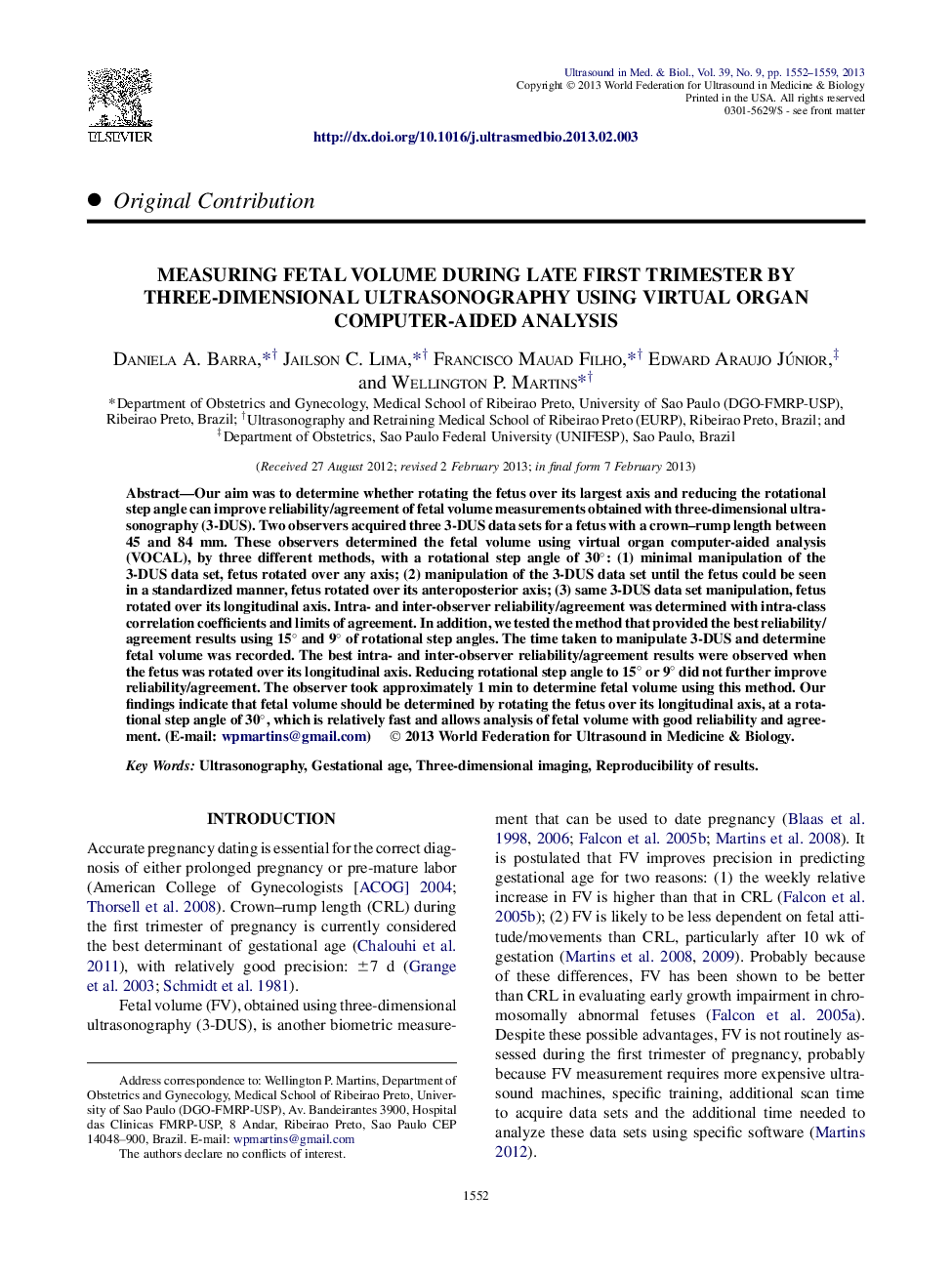| Article ID | Journal | Published Year | Pages | File Type |
|---|---|---|---|---|
| 10691855 | Ultrasound in Medicine & Biology | 2013 | 8 Pages |
Abstract
Our aim was to determine whether rotating the fetus over its largest axis and reducing the rotational step angle can improve reliability/agreement of fetal volume measurements obtained with three-dimensional ultrasonography (3-DUS). Two observers acquired three 3-DUS data sets for a fetus with a crown-rump length between 45 and 84 mm. These observers determined the fetal volume using virtual organ computer-aided analysis (VOCAL), by three different methods, with a rotational step angle of 30°: (1) minimal manipulation of the 3-DUS data set, fetus rotated over any axis; (2) manipulation of the 3-DUS data set until the fetus could be seen in a standardized manner, fetus rotated over its anteroposterior axis; (3) same 3-DUS data set manipulation, fetus rotated over its longitudinal axis. Intra- and inter-observer reliability/agreement was determined with intra-class correlation coefficients and limits of agreement. In addition, we tested the method that provided the best reliability/agreement results using 15° and 9° of rotational step angles. The time taken to manipulate 3-DUS and determine fetal volume was recorded. The best intra- and inter-observer reliability/agreement results were observed when the fetus was rotated over its longitudinal axis. Reducing rotational step angle to 15° or 9° did not further improve reliability/agreement. The observer took approximately 1 min to determine fetal volume using this method. Our findings indicate that fetal volume should be determined by rotating the fetus over its longitudinal axis, at a rotational step angle of 30°, which is relatively fast and allows analysis of fetal volume with good reliability and agreement.
Related Topics
Physical Sciences and Engineering
Physics and Astronomy
Acoustics and Ultrasonics
Authors
Daniela A. Barra, Jailson C. Lima, Francisco Mauad Filho, Edward Araujo Júnior, Wellington P. Martins,
